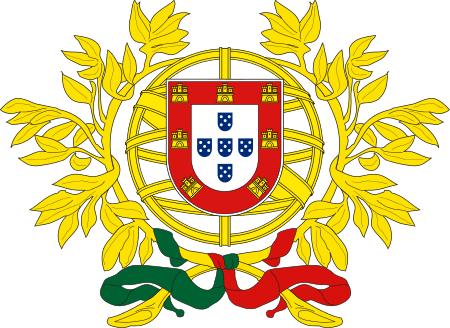1938 Portuguese legislative election
Parliamentary elections were held in Portugal on 30 October 1938.[1] The country was a one-party state at the time and the National Union was the only party to contest the elections, with no opposition candidates allowed to run.[2]
| ||||||||||||||||||||||||||||
100 seats to the National Assembly 51 seats needed for a majority | ||||||||||||||||||||||||||||
|---|---|---|---|---|---|---|---|---|---|---|---|---|---|---|---|---|---|---|---|---|---|---|---|---|---|---|---|---|
| ||||||||||||||||||||||||||||
| ||||||||||||||||||||||||||||
 |
|---|
| This article is part of a series on the politics and government of Portugal |
| Constitution |
|
|
Legislature
|
|
|
|
Electoral system
For the elections the country formed a single 100-member constituency.[3] All men aged 21 or over were eligible to vote as long as they were literate or paid over 100 escudos in taxation, whilst women aged over 21 had to have completed secondary education to do so.[3] However, only 11% of the population were registered to vote.[4]
Results
| Party | Votes | % | Seats |
|---|---|---|---|
| National Union | 100 | 100 | |
| Invalid/blank votes | – | – | |
| Total | 694,290 | 100 | 100 |
| Registered voters/turnout | 829,054 | 83.7 | – |
| Source: Nohlen & Stöver | |||
gollark: And with *good IO*!
gollark: The RK3588 is fearsomely powerful. Actually competitive with my 10-year-old x86 server.
gollark: https://www.cnx-software.com/2021/12/16/rockchip-rk3588-benchmarks-show-up-on-geekbench/
gollark: https://www.cnx-software.com/2021/12/16/rockchip-rk3588-datasheet-sbc-coming-soon/
gollark: This is because RK3588 good.
References
- Dieter Nohlen & Philip Stöver (2010) Elections in Europe: A data handbook, p1542 ISBN 978-3-8329-5609-7
- Nohlen & Stöver, p1527
- Nohlen & Stöver, p1535
- Nohlen & Stöver, p1544
This article is issued from Wikipedia. The text is licensed under Creative Commons - Attribution - Sharealike. Additional terms may apply for the media files.
